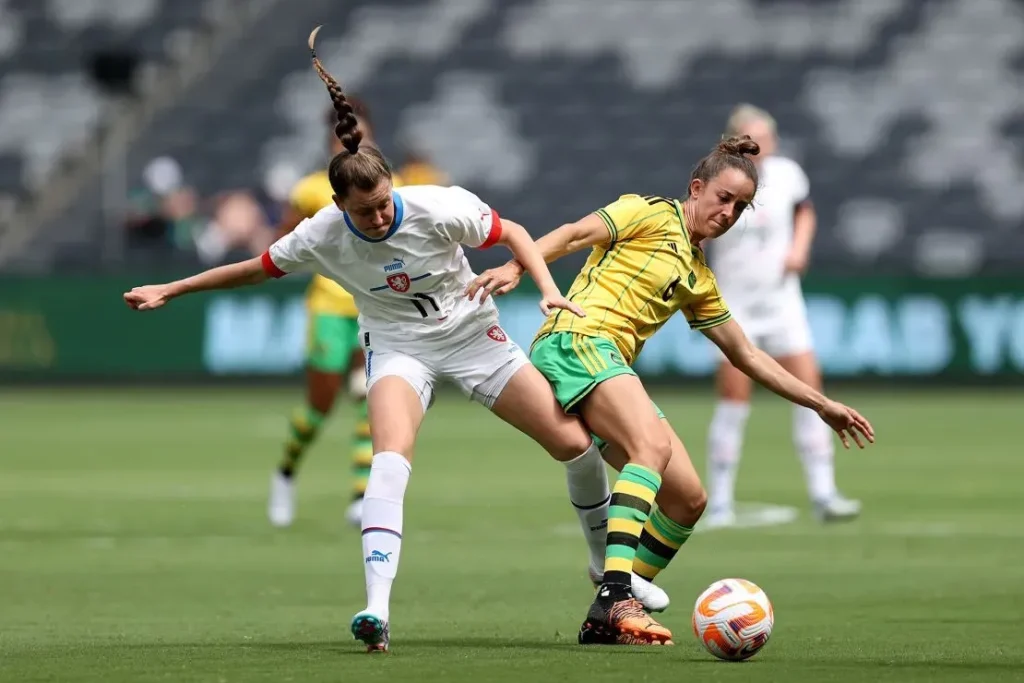Women in Sports ignites a wave of change, weaving stories of grit, innovation, and achievement that educate, inspire, and empower fans around the world. From local clubs to global stages, the movement highlights trailblazers who redefine possibility and expand opportunities. They are reshaping media narratives, sponsor strategies, and policy trajectories, moving toward greater gender equality in sports by spotlighting diverse voices. Across disciplines and generations, their achievements drive recognition, inspire participation, and redefine what it means to compete at every level, from school leagues to major arenas. Together, these dynamics form a roadmap for the next generation of athletes, fans, coaches, and policymakers who strive for lasting, equitable opportunity.
Across the broader landscape of sport, female athletes and women competitors alike show how skill, strategy, and perseverance translate into lasting impact. From breakthrough performances to leadership roles in coaching and governance, the conversation extends beyond wins to reflect inclusive practices, fair funding, and equitable opportunities for all. By pairing athletic excellence with advocacy and community involvement, this narrative demonstrates how sport can advance social parity and inspire future generations.
Women in Sports: Trailblazers who opened doors
Long before many girls laced up their first cleats, groundbreaking women rewrote the rules of participation and visibility. Kathrine Switzer’s 1967 marathon entry challenged the assumption that women could not or should not run long distances, a moment that still resonates in the broader push for gender equity in sport. This milestone is more than a single race; it’s the spark that fueled a movement, birthing a set of powerful female athletes stories that inspire generations to dream bigger and push further.
Billie Jean King’s triumphs on the court were paired with a bold advocacy that used athletic excellence as a platform for change. The battles she fought—on and off the court—helped elevate the profile of women trailblazers in sports, proving that visibility can translate into opportunity. Wilma Rudolph’s Olympic success after overcoming polio further demonstrated resilience and excellence, showing that champions can redefine what is possible and reshape the expectations placed on women in sport.
Champions who defined excellence in women’s athletics achievements
As barriers weakened, a new generation of champions emerged, elevating performance while expanding the definition of top-tier competition. In soccer, Mia Hamm and later Megan Rapinoe popularized the sport globally, winning championships and using their platforms to advocate for equality and inclusivity. The duo exemplifies how athletes can drive cultural conversations while maintaining elite standards, adding to the tapestry of women in athletics achievements.
Serena Williams transcended tennis with a career marked by dominance, longevity, and advocacy. Her 23 Grand Slam titles are matched by a voice that champions gender equality in sports, parental rights, and fair compensation. By weaving performance with public impact, Williams redefined what marketable success looks like for women in sport, illustrating how champions can shape norms beyond wins and losses.
Changing perceptions in sports: media representation, sponsorship, and policy
A broad cultural shift is evident in how media portrays female athletes. Coverage has evolved from sporadic features to nuanced, in-depth storytelling that highlights strategic thinking, athletic prowess, and the complexities of athletes’ lives. This transition helps fans connect with athletes as multifaceted people, not merely as competitors, contributing to the broader arc of changing perceptions in sports.
Economic and policy dynamics also reshape how fans engage with women’s sport. Ongoing conversations about pay equity, prize money, facilities, and sponsorship opportunities influence both perception and reality. The visibility of female athletes who excel at the highest levels has increased sponsorship diversity, empowering more sustainable careers and reinforcing the link between media, money, and merit in sport.
Policy, pay, and sponsorship: shaping the playing field
Policy shifts and grassroots advocacy have redefined access to training, coaching, and competition. Title IX’s legacy in the United States catalyzed a generation of athletes to pursue opportunities once out of reach, illustrating how policy can accelerate gender equality in sports. Today, international programs and philanthropic initiatives continue that momentum, widening opportunities for girls and women across the globe.
Meanwhile, sponsorship models and investment in women’s leagues are beginning to reflect the value of diverse talent. Endorsements, longer-term sponsorship commitments, and targeted development programs contribute to more stable career trajectories for female athletes. As these resources grow, the pathway from aspiring competitor to lasting leader becomes clearer, reinforcing the importance of gender equality in sports as a practical objective as well as a moral imperative.
Intersections matter: race, class, and ability in women’s athletic stories
A complete picture of Women in Sports acknowledges that experiences differ widely across race, socioeconomic background, disability, and geography. The stories of athletes who navigate economic barriers or systemic biases reveal additional layers of challenge and resilience that shape trajectories toward the top of their sport. These nuanced narratives—part of the broader female athletes stories—underscore that progress is not uniform, but cumulative and diverse.
Highlighting diverse pathways also invites a global perspective on opportunity. By building inclusive pipelines, offering mentorship, and ensuring access to quality coaching and facilities, the sport ecosystem can broaden participation and celebrate a wider spectrum of talent. The interwoven realities of race, class, and ability contribute to a richer, more equitable tapestry of champions worldwide.
The next generation and global perspective: empowering future athletes
Today’s aspiring athletes benefit from a connected world where social media, streaming platforms, and global networks enable them to share training routines, insights, and personal journeys with broad audiences. Young competitors worldwide can aspire to become champions and leaders in sport, guided by the legacies of Women in Sports and motivated to contribute to a culture that values fairness, safety, and inclusive opportunity.
Fans, coaches, administrators, and sponsors all play a part in cultivating this ecosystem. By prioritizing mentorship, inclusive coaching practices, and equitable resource distribution, the next generation can build on the momentum of past and current pioneers. This ongoing legacy—rooted in women trailblazers in sports and framed by a commitment to gender equality in sports—ensures that the path to greatness remains accessible for every aspiring athlete, regardless of background.
Frequently Asked Questions
How have Women in Sports highlighted pivotal moments that advanced gender equality in sports?
Pivotal moments—such as Kathrine Switzer’s 1967 marathon entry and Billie Jean King’s 1973 Battle of the Sexes—show how advocacy and athletic excellence drive change. These milestones helped shift policy, funding, and media attention, laying groundwork for more equitable participation and opportunities for all female athletes.
How do female athletes stories from trailblazers influence changing perceptions in sports?
Stories from female athletes like Switzer, King, Rudolph, and others illuminate resilience and skill, shaping public understanding and reducing stereotypes. Media and fans increasingly recognize women as strategic, competitive athletes, contributing to changing perceptions in sports.
What do women in athletics achievements reveal about the evolution of Women in Sports?
Women in athletics achievements across disciplines—tennis, track, gymnastics, soccer—demonstrate progress in performance and leadership, signaling a broader expansion of opportunities under Women in Sports.
In what ways have women trailblazers in sports influenced leadership and policy within the industry?
Trailblazers in sports have moved into coaching, governance, and administration, expanding female leadership and driving policy changes that promote fairness and access.
How does media representation and sponsorship in Women in Sports drive gender equality in sports?
Increased media spotlight and diverse sponsorships for women in sports boost visibility, sponsorship equity, and pay parity, advancing gender equality in sports.
What practical steps can fans take to support Women in Sports and amplify female athletes stories?
Fans can attend events, stream women’s competitions, and share female athletes stories to broaden reach, support networks, and encourage continued investment in Women in Sports.
| Topic | Key Points | Notable Figures/Examples |
|---|---|---|
| Trailblazers who opened doors | Early pioneers rewrote participation and visibility; catalyzed policy changes; demonstrated that visibility breeds opportunity; leadership in coaching and governance began to normalize female leadership. | Kathrine Switzer; Billie Jean King; Wilma Rudolph; women in leadership (coaching/admin) |
| Champions who defined excellence | Champions elevated performance and used platforms for equality; leveraged fame to advocate for gender equality, safety, and inclusive policies across sports. | Mia Hamm; Megan Rapinoe; Serena Williams; Simone Biles; Allyson Felix |
| Changing perceptions and culture | Media representation expanded; pay equity and resource allocation improvements; policy shifts (Title IX) and grassroots/global initiatives broaden access and visibility; sponsorships diversified. | Title IX; diverse media coverage; sponsors; leagues and programs |
| Intersections matter: race, class, and ability | Experiences vary by race, socioeconomic status, disability, and geography; narratives must acknowledge multiple lived realities and barriers while highlighting resilience. | Athletes across diverse backgrounds (general reference) |
| The next generation and global perspective | Global connectivity via social media and streaming enables shared training, insights, and journeys; history inspires girls worldwide to pursue sport and leadership. | Global athlete networks; aspiring champions worldwide |
| Practical implications for athletes, fans, and organizations | Diverse recruitment pipelines; mentorship; inclusive coaching; equal access to resources; visible female role models; a supportive ecosystem. | Coaches, administrators, fans, sponsors |
| A call to action for readers | Attend, support, mentor, advocate for equitable policies, and push for balanced media coverage to lift Women in Sports. | Readers (general) |
Summary
Conclusion: Women in Sports tells the ongoing story of trailblazers, champions, and cultural shifts that propel the entire sports ecosystem toward greater equity. By honoring the achievements of female athletes, acknowledging the complexities of their journeys, and supporting inclusive structures, we help ensure a future where every girl who loves sport can envision leadership, success, and lasting legacy. The journey continues, and every act of support—whether as a fan, a sponsor, a coach, or a teammate—strengthens a sports world that values talent, courage, and dignity as much as victory. Women in Sports remains a powerful lens for progress, opportunity, and community across disciplines and around the world.



